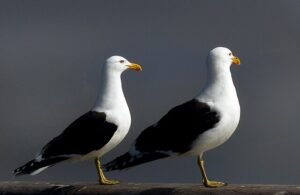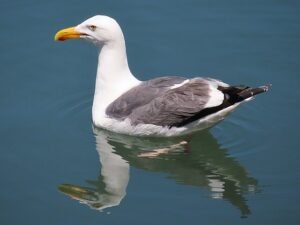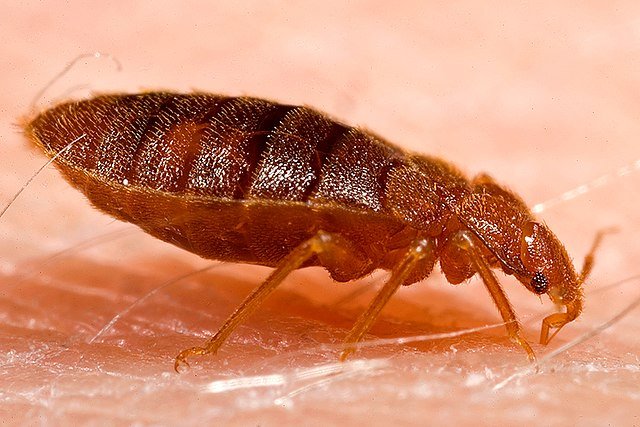Gulls (Laridae): Identification, Behavior & Control
 Gulls, members of the family Laridae, are among the most familiar birds across coastlines, inland waterways, and even cities. Known commonly as “seagulls,” these birds are not confined to the sea—they thrive in both coastal and urban environments, adapting rapidly to human-altered landscapes. Their intelligence, strong flight, and highly opportunistic feeding behavior have enabled them to become dominant in many regions.
Gulls, members of the family Laridae, are among the most familiar birds across coastlines, inland waterways, and even cities. Known commonly as “seagulls,” these birds are not confined to the sea—they thrive in both coastal and urban environments, adapting rapidly to human-altered landscapes. Their intelligence, strong flight, and highly opportunistic feeding behavior have enabled them to become dominant in many regions.
While admired for their aerial acrobatics and often romanticized in literature, gulls have also become major urban pests. Like Pigeons (Columba livia), they have learned to exploit food waste, landfills, and outdoor dining areas, leading to property damage, disease concerns, and aggressive encounters with people.
This article explores gull identification, biology, ecology, global distribution, risks, and practical control methods, while also diving into their cultural symbolism and ecological importance.
Identification
Gulls are medium to large birds with highly variable appearances depending on age, species, and season.
Size: Range from small species like the Little Gull (Hydrocoloeus minutus, ~25–30 cm wingspan) to the Great Black-backed Gull (Larus marinus, wingspan up to 170 cm).
Coloration: Adults are usually white with gray or black wings, often with distinctive wing tips. Juveniles are mottled brown and take several years to achieve full adult plumage.
Bill: Stout, slightly hooked bill—yellow, orange, or red depending on the species.
Legs: Typically yellow, pink, or gray.
Call: Loud, harsh cries, often described as laughing or wailing.
Field Tip: Gulls are often confused with terns (Sternidae), but terns are slimmer, with pointed wings and more delicate bills.
Biology & Ecology
Gulls are exceptionally adaptable, with behaviors and lifecycles that allow them to thrive in diverse habitats.
Feeding Behavior
Omnivorous opportunists: Gulls eat fish, insects, small mammals, bird eggs, carrion, garbage, and even other birds.
Food stealing: Known for kleptoparasitism—stealing prey from other birds.
Urban adaptation: Gulls scavenge at landfills, fishing harbors, fast-food restaurants, and outdoor trash bins.
Reproduction
 Nesting season: Spring to early summer.
Nesting season: Spring to early summer.Colonies: Large, noisy colonies often on cliffs, rooftops, or islands.
Clutch size: 2–3 eggs.
Parental care: Both parents incubate eggs and feed chicks.
Behavior
Highly social, often in large flocks.
Known for mobbing predators and even people when defending nests.
Long-lived birds, with some species surviving over 30 years.
Global Distribution
Gulls are cosmopolitan, found on every continent except Antarctica’s interior.
Europe & North America: Dominated by species like Herring Gull (Larus argentatus), Ring-billed Gull (Larus delawarensis), and Great Black-backed Gull (Larus marinus).
Asia: Includes Brown-headed Gull (Chroicocephalus brunnicephalus), Black-headed Gull (Chroicocephalus ridibundus).
Australia & New Zealand: Silver Gull (Chroicocephalus novaehollandiae).
Africa: Grey-headed Gull (Chroicocephalus cirrocephalus) common inland.
South America: Kelp Gull (Larus dominicanus).
Adaptability allows them to occupy coastlines, rivers, lakes, and urban environments, making them one of the most widespread bird families.
Risks & Damage
Gulls may not cause the structural destruction of Carpet Beetles (Anthrenus spp.) or the sanitation issues of Fruit flies (Drosophila spp.), but their presence creates unique problems:
Health risks
Gulls carry pathogens like Salmonella, E. coli, and Campylobacter.
Feces contaminate water sources, roofs, and urban areas.
Association with Blow flies (Calliphoridae) and other disease-spreading insects increases risks.
Aggression
Gulls attack humans when defending nests or competing for food.
Known for snatching food directly from people’s hands.
Crop and livestock damage
Feed on crops such as berries and grains.
Can spread parasites to livestock.
Property damage
Droppings corrode building materials.
Nests clog drains, leading to water damage.
Signs of Infestation
Large flocks gathering near landfills, harbors, or food sources.
Persistent droppings on rooftops, windows, and outdoor furniture.
Nesting colonies on buildings or flat roofs.
Aggressive behavior near food or during nesting season.
Control Methods
Household & Small-Scale Control
Exclusion: Netting, spikes, and wires prevent perching on roofs and ledges.
Waste management: Secure garbage bins and remove food waste promptly.
Scare tactics: Reflective devices, kites, and predator decoys can deter gulls temporarily.
Noise deterrents: Recordings of predator calls or distress calls sometimes work.
Professional Control
Falconry programs: Birds of prey used in airports and stadiums to deter gulls.
Trapping & relocation: Limited success due to gulls’ homing instinct.
Population management: In some regions, egg oiling (coating with non-toxic oil to prevent hatching) is used.
Lethal control: Rare and highly regulated; often controversial.
Advanced Approaches
Integrated Pest Management (IPM): Combines exclusion, waste control, and deterrents for sustainable results.
Urban planning: Designing buildings with fewer flat ledges to reduce nesting.
Biological control: Encouraging natural predators like raptors.
Behavioral modification: Public education campaigns to stop feeding gulls, which reinforces dependency on human food.
Cultural & Historical Context
Gulls have been symbolic across cultures:
Literature: Romanticized as symbols of freedom (e.g., Jonathan Livingston Seagull).
Religion/Myth: Seen as messengers in maritime traditions.
Urban icon: Both admired and despised in coastal cities.
Interestingly, gulls’ adaptation to human environments mirrors that of Pigeons (Columba livia), highlighting how some species thrive alongside humans while others decline.
FAQ
Q1: Are gulls dangerous to humans?
Yes, particularly during nesting season. They may dive at people to defend chicks or steal food, though serious injuries are rare.
Q2: Do gulls only live near the sea?
No. Despite the common name “seagulls,” many species live inland near lakes, rivers, and cities.
Q3: What diseases can gulls spread?
Their droppings may carry Salmonella, Campylobacter, and parasites that pose risks to humans and livestock.
Q4: Why are gulls so noisy?
Their loud calls serve to defend territory, communicate with mates, and alert colonies to danger.
Q5: How long do gulls live?
Some species, such as Herring Gulls (Larus argentatus), can live over 30 years in the wild.
Q6: Why do gulls follow plows or fishing boats?
They take advantage of disturbed soil or discarded fish as easy food sources.
Final Thoughts
Gulls (Laridae) are among the most adaptable birds in the world. Their intelligence and ability to thrive in both natural and urban environments make them fascinating creatures, but also problematic pests. From contaminating rooftops and food sources with droppings, to aggressively snatching food, to creating safety hazards at airports, gulls represent a complex challenge for pest control professionals and city planners alike.
Managing gulls effectively requires more than short-term fixes. Simple scare devices may work briefly, but gulls quickly learn to ignore them. Long-term success is only possible through integrated approaches: proper waste management, structural modifications, community education, and in some cases, regulated population control methods.
At the same time, gulls play important ecological roles, cleaning up carrion and acting as indicators of environmental change. A balanced perspective is necessary: not every gull is a nuisance, and indiscriminate control can disrupt ecosystems.
For homeowners, businesses, or municipalities facing persistent gull issues, professional pest control services provide the expertise needed to develop safe, legal, and lasting strategies.
Disclaimer
This article is for informational purposes only. Pest control laws and approved chemicals vary by country. For best results and legal safety, we strongly recommend contacting a licensed pest control professional in your local area. Always make sure that the pest control technician is properly certified or licensed, depending on your country’s regulations. It’s important to confirm that they only use approved products and apply them exactly as instructed on the product label. In most places in Europe, UK, or USA, following label directions is not just best practice—it’s the law.
Author
Nasos Iliopoulos, MSc Agronomist & Certified Pest Control Expert
Scientific Director – Advance Services (Athens, Greece)
Licensed Pest Control Business – Ministry of Rural Development & Food (GR)
References
Penn State Extension – Managing Gulls Around Homes and Properties.
BPCA (British Pest Control Association) – Pest advice for controlling pigeons, gulls and other birds

 Nesting season: Spring to early summer.
Nesting season: Spring to early summer.